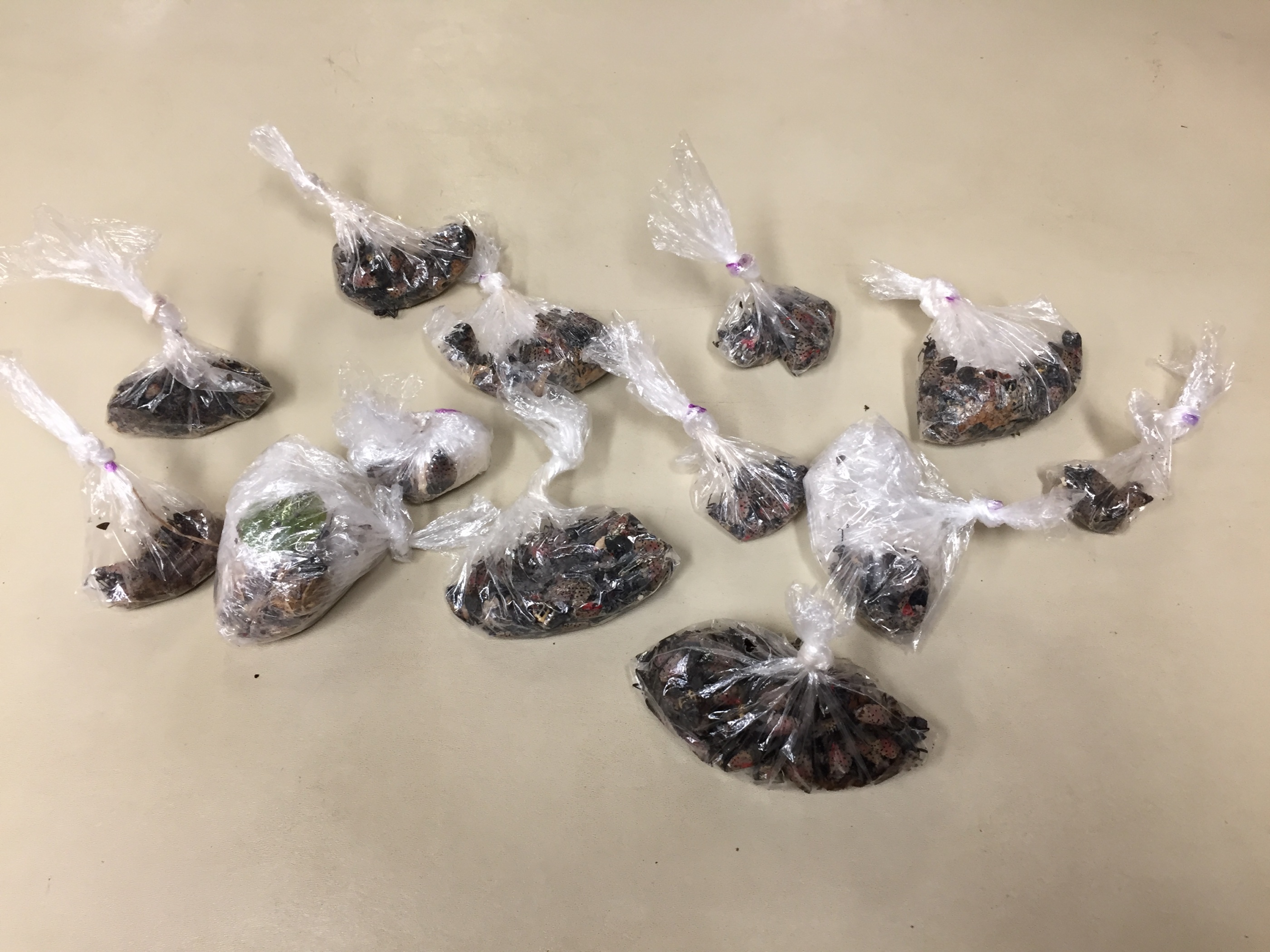Crow’s Nest: Marshmallows and lanternflies
By Daniel Barringer, Preserve Manager. Photos by Molly Smyrl and Daniel Barringer.
So we hung the Pennsylvania Department of Agriculture spotted lanternfly poster (“Check your Gear”) in our public restroom at the Crow’s Nest visitor center and within a day a pair of visitors came in to say they had found an egg mass. They didn’t know what it was until they visited the restroom and saw the poster.
While we might have expected it to be on a smooth-barked tree species, instead it was on a small smooth section under exfoliating river birch bark (Betula nigra). There’s no way I ever would have found this on my own—it was in an out-of-the-way location and I could barely see it even after I was staring at it.

A few minutes later we found two more on this ironwood tree (Carpinus caroliniana):

And so it went. Even on this ash branch that I pruned this week, before I put it on the chipping pile, I noticed an egg mass. Not all of them are located within reach of even the power pole pruner, however. (And yes, this ash will be dying from Emerald Ash Borer anyway, but that’s a story for another day.)

Educator Molly Smyrl had kids at our after-school Nature Clubs this week search out adult lanternflies (see my previous post for photos of the insect). In return for each spotted lanternfly they found and turned in, they were rewarded with a mini marshmallow. For each egg mass they found (eggs and lanternflies bagged up in the photo below) they received a large marshmallow. Molly sees the only limitation to this project the local availability of supermarket marshmallows, the lanternflies are that common here now (and the kids so enthusiastic). And remember, we saw our first lanternfly ever here just a few weeks ago! I don’t know whether they arrived as adults or we completely missed (despite looking for them) last year’s egg masses and this summer’s juvenile lanternflies.
The kids were planning to go on a long hike yesterday but they never made it far since they found so many lanternflies in one spot early in the hike. But they enjoyed the marshmallows.

Meanwhile, Natural Lands is collecting data on our preserves as to where the lanternfly is occurring, and submitting that data to the Pennsylvania Department of Agriculture. As of this writing the insect pest can be found on five our our preserves in Berks, Chester, Montgomery, and Bucks/Northampton Counties. This last preserve, Mariton Wildlife Sanctuary, overlooks the Delaware River with New Jersey in sight.
Two of those five occurrences were outside of state-quarantined municipalities when they were found, though the quarantine grows in size as the science catches up in response to rapidly-changing conditions.
We have three more preserves within already-quarantined municipalities where we haven’t yet observed lanternflies, but that too could change at any time.
We have lanternflies at preserves (such as Crow’s Nest) where we don’t have any ailanthus, the invasive non-native tree species that is a preferred host. On preserves where there is still ailanthus we are continuing to manage the plant and would like to use the “trap trees” technique described in my previous post (and in more detail on the PDA website) but in the absence of a broader regional effort it seems likely that spotted lanternfly will become well-established before we can achieve meaningful control on our protected lands.
Ailanthus is a common species along our roadways so there is a ready-made pathway for the insect to follow.
Meanwhile it is critical that everyone be aware of this issue and not move firewood, equipment stored outdoors, or other other materials that could leapfrog a population into new territory.
We don’t know yet the effect this insect will have on our region’s agriculture or natural resources.
